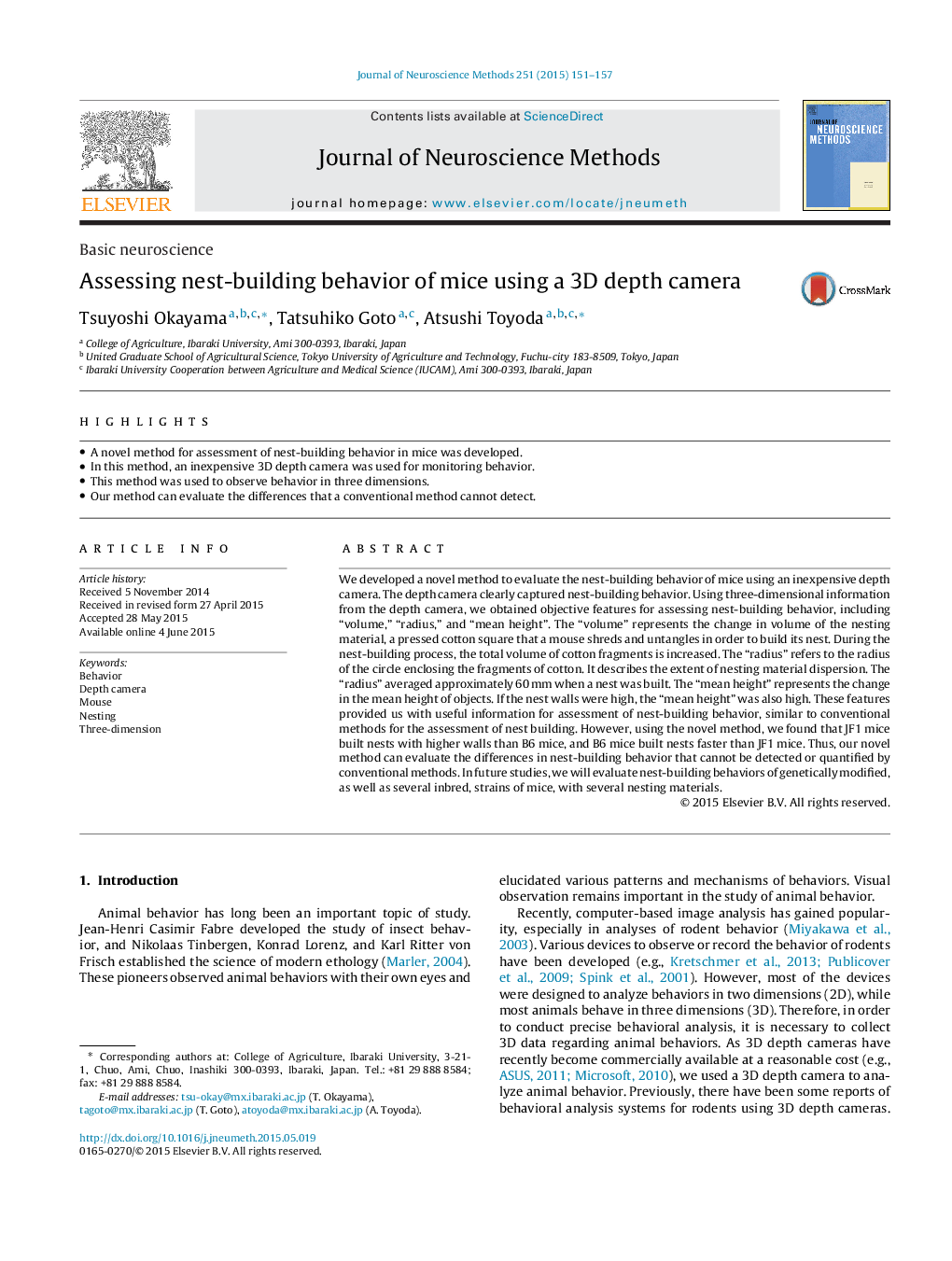| Article ID | Journal | Published Year | Pages | File Type |
|---|---|---|---|---|
| 6268190 | Journal of Neuroscience Methods | 2015 | 7 Pages |
â¢A novel method for assessment of nest-building behavior in mice was developed.â¢In this method, an inexpensive 3D depth camera was used for monitoring behavior.â¢This method was used to observe behavior in three dimensions.â¢Our method can evaluate the differences that a conventional method cannot detect.
We developed a novel method to evaluate the nest-building behavior of mice using an inexpensive depth camera. The depth camera clearly captured nest-building behavior. Using three-dimensional information from the depth camera, we obtained objective features for assessing nest-building behavior, including “volume,” “radius,” and “mean height”. The “volume” represents the change in volume of the nesting material, a pressed cotton square that a mouse shreds and untangles in order to build its nest. During the nest-building process, the total volume of cotton fragments is increased. The “radius” refers to the radius of the circle enclosing the fragments of cotton. It describes the extent of nesting material dispersion. The “radius” averaged approximately 60Â mm when a nest was built. The “mean height” represents the change in the mean height of objects. If the nest walls were high, the “mean height” was also high. These features provided us with useful information for assessment of nest-building behavior, similar to conventional methods for the assessment of nest building. However, using the novel method, we found that JF1 mice built nests with higher walls than B6 mice, and B6 mice built nests faster than JF1 mice. Thus, our novel method can evaluate the differences in nest-building behavior that cannot be detected or quantified by conventional methods. In future studies, we will evaluate nest-building behaviors of genetically modified, as well as several inbred, strains of mice, with several nesting materials.
